Here's $10,000. Buy a car in the year you were born

Ten grand doesn’t seem like a lot of money to buy a car, does it? Well, not in 2023 it isn’t, and actually hasn’t been for much of our lifetimes. But what about right at the beginning of our lifetimes? We were curious to see just how much car prices and the value of the American dollar has changed over time, and this seemed like a decent way to do it. So we selected a round-enough number, handed each of our editors an imaginary check for $10,000 and told them to get into a time machine and spend every cent possible on a new car from the year they were born.
Admittedly, there are decades that will go unrepresented (sorry Gen X, you’re still the best) as a majority of our editors were born in the 1980s, which we already visited in this series (albeit with a heftier chunk of fake cash on hand). Hopefully you dear readers will be able to fill in some of the gaps, but we still have folks born on either side of the Reagan Era, so sit back and enjoy our little adventure in inflation.
1980 – Senior Editor Jeremy Korzeniewski
1980 Pontiac Trans Am
Despite being born right in the middle of the performance doldrums of the Malaise era, I actually found myself with plenty of interesting choices for this virtual exercise. After considering various Jeeps, Internationals (it was the last year of the Scout II) and even the Volkswagen Vanagon (don’t laugh — Car and Driver called it “the Porsche 911 of vans”), I eventually decided to go with my gut instinct and pick the first car that came to mind. For 1980, Pontiac did the only thing it knew how to do in order to hit fuel efficiency goals while also offering the buying public as much power as possible: it added a turbocharger to its 301-cubic-inch V8 engine. The resulting 210 hp and 345 lb-ft of torque weren’t great by today’s standards, but they were the best anyone could do at the time.
My father bought a brand-new Trans Am in 1977, and I’m a lot like him in my automotive predilections. There’s a chance I would have scoured dealerships for a leftover 1979 model, the last year of the old-school 400-cubic-inch V8, because it was quicker than the turbo 301 and was offered with a traditional four-speed manual instead of three-speed auto that came standard in ’80. But then again, I’m a sucker for cool tech, and turbochargers were as cool and techy as it got the year I was born. I could play a little fast and loose with the budget and pick the sweet Pace Car edition, but instead I’ll go the classic Bandit-edition Black and Gold model you see above to stay under our $10,000 price cap.
1983 – Senior Editor James Riswick
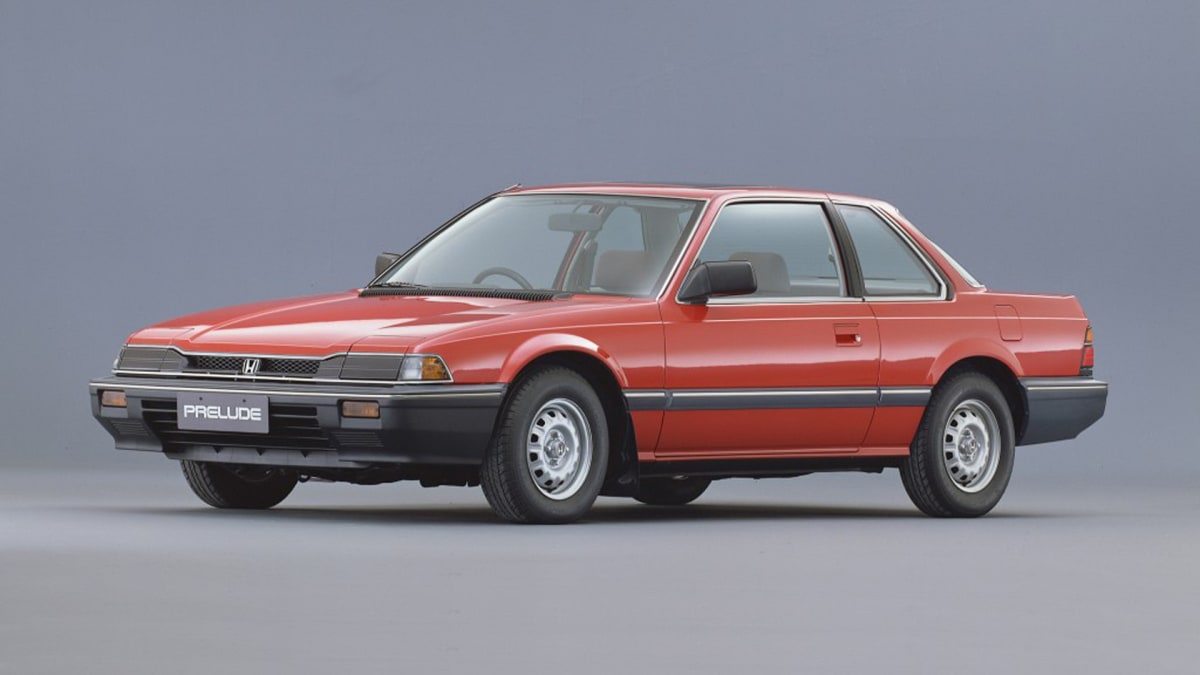
1983 Honda Prelude
I might end up regretting this choice back in ’83 as this first year of the second-generation Prelude had a 100-horsepower 1.8-liter engine, and I could’ve used this money instead on a V8-powered Camaro Berlinetta or a Ford Mustang GT with either the V8 or turbo-four, but whatever. I’m a sucker for hidden headlights, and while most of the cars available at this price range in 1983 seem to be relics of the Malaise-era 1970s, the Prelude is so much more modern. I think I would’ve appreciated that back in the first Trudeau era (I’m Canadian, forget Reagan), not to mention the build quality and reliability that this era of Hondas would cement into the public’s psyche … and spell serious trouble for the domestics. Honestly, I was surprised this Prelude debuted all the way back in ’83. Seems like it would’ve been later. I think that says something. I’m glad I could get it for almost exactly $10,000.
1976 – Contributing Writer Ben Hsu
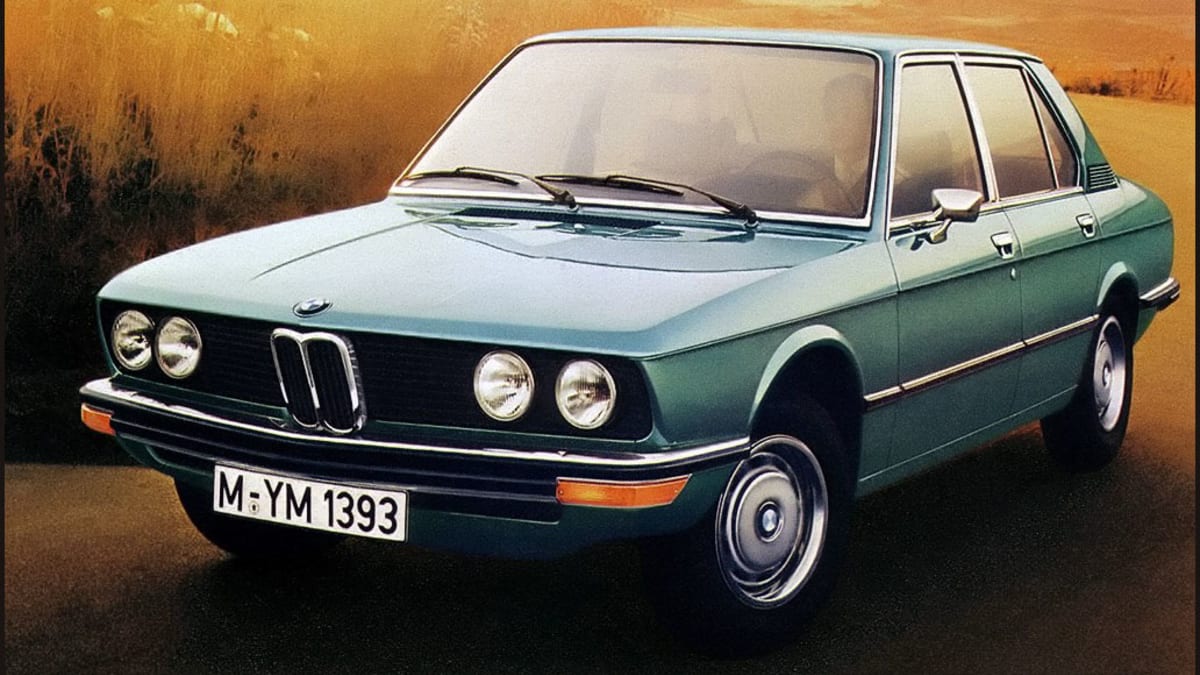
1976 BMW 530i
The good news is that the further back you go the more $10,000 gets you. The bad news is I was born in 1976, not a great year for cars. Not only were carmakers dealing with the aftermath of the oil crisis, but they were struggling to figure out newly enacted emissions regulations. In the year of our nation’s bicentennial, a Mustang II 5.0 V8 made only 140 horsepower. As a kid my dream car was a C3 Corvette, and a Stingray L82 with the optional 350 cu. in. V8 could be optioned out about $10k. However, I have since owned (and sold) an actual 1977 C3 and to be honest I didn’t enjoy the absence of a trunklid or having my arms itchy with fiberglass any time I worked under the hood. About the only thing it had going for it was its stunning looks. My first choice with 20-20 hindsight would be a Toyota Celica GT Liftback, but the rules of the game stipulate I have to spend all $10,000. The ‘Yota’s started at just $4,070, a killer deal but too cheap.
So instead I shall buy a 1976 BMW 530i, which stickered at a hair over 10 thou. While the suspension was softer than what underpinned subsequent “ultimate driving” models, its 3.0-liter inline-six made 176 horsepower, almost as much as the Corvette’s 5.7-liter V8’s 180 horses. Plus, the Bimmer could be had with five forward gears, one more than the Corvette (and same as the Celica). The Bertone-styled E12 still looks sharp and is unmistakably BMW in the traditional sense. It has almost nothing in common with modern BMWs but to me that’s a good thing. What it lacks in speed it makes up for in understated class. The irony is that the Corvette has sold for close to the 10 grand’s 2023 inflation-adjusted equivalent of $53,000, the Celica has exceeded that, but E12 values have stayed pretty flat.
1981 – Senior Editor John Beltz Snyder
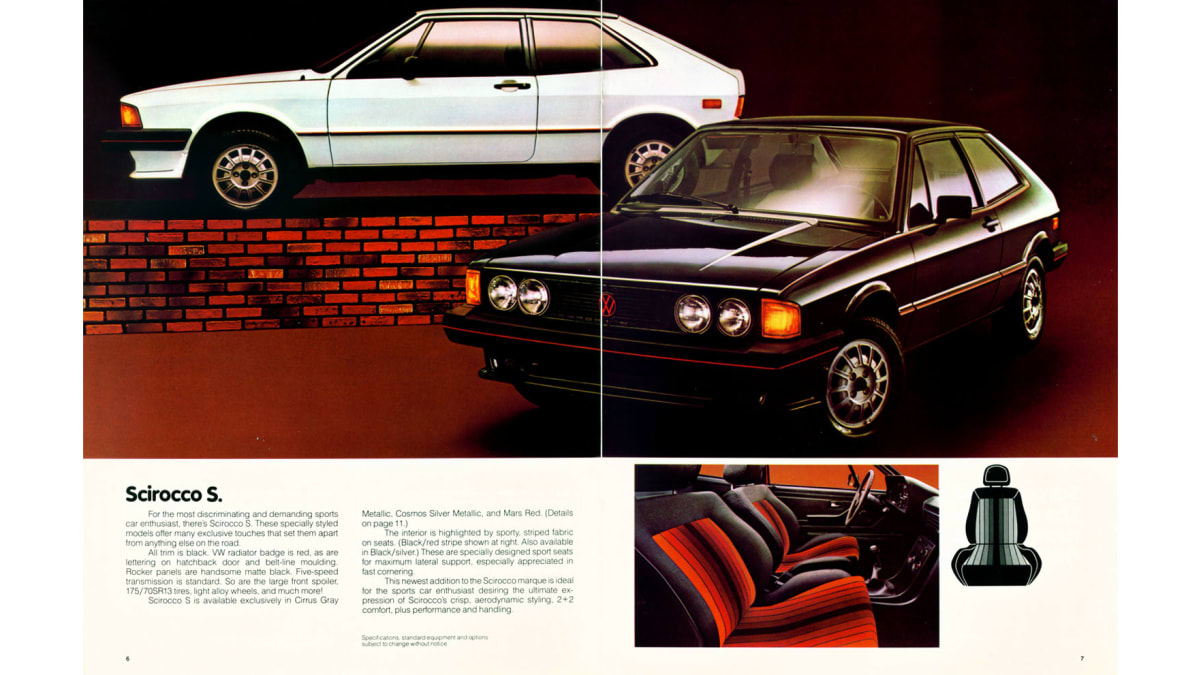
1981 Volkswagen Scirocco S
In 1981, 10 grand could get me this Giorgetto Giugiaro-designed delight. That year, it got a 1.7-liter inline-four, and the five-speed manual was standard. The S package got some rad upgrades, like a bigger front spoiler, a red VW badge up front and those incredible striped seats. It was good on fuel, too, and less than a decade out from the first oil crisis, and the smaller 1979 crisis still fresh in the American memory, that would provide some peace of mind. But my mind would be on maintaining momentum and what grip I had as I tossed it through the corners. And, yes, air conditioning is in my budget.
1984 – Associate Editor Byron Hurd
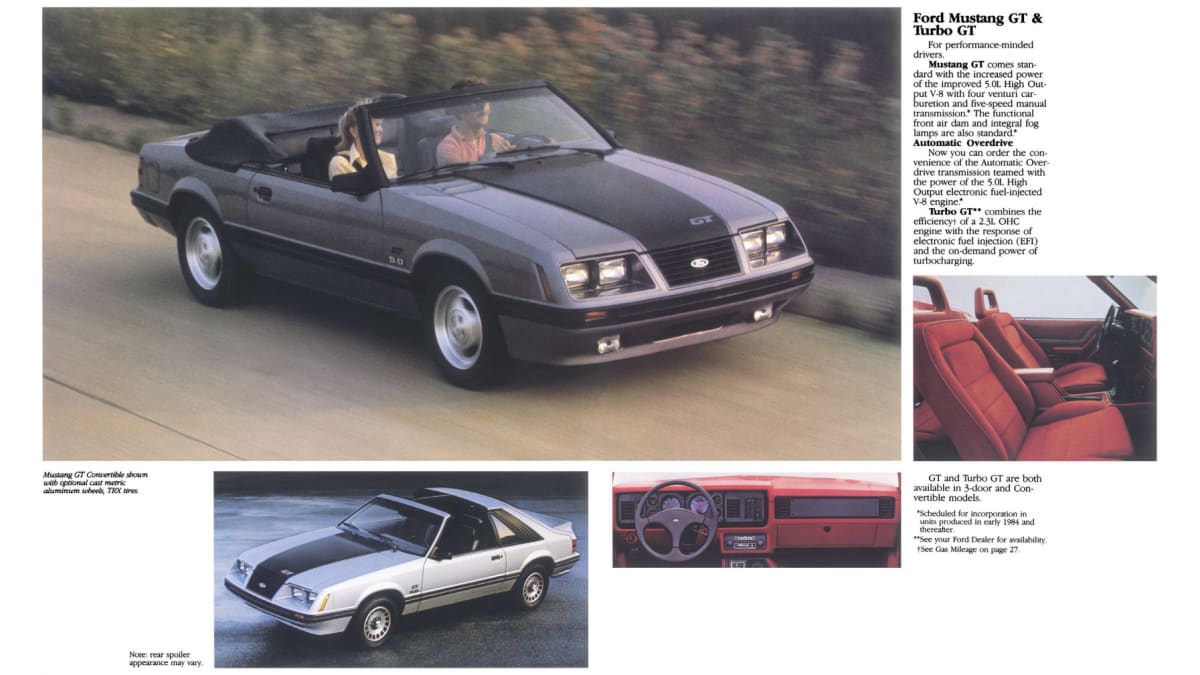
1984 Ford Mustang GT Turbo
Riswick and I face the same predicament: While $10,000 was plenty in the early-mid ’80s, the options, though plentiful, were not exactly pinnacles of internal-combustion prowess. 1984 marked the introduction of the C4 Corvette, which went on to do some decent things but debuted with a small block producing a whopping 205 horses. Screw the beef. Where’s the power?
The discerning enthusiast would probably take the opportunity to pounce upon one of the many freshly imported sport compacts that came perilously close to offering the same straight-line performance as America’s neutered pony cars. But hey, that’s not me. I’m a self-aware Mustang fan who grew up admiring a neighbor’s pristine Fox Body convertible.
Sadly, the SVO is out of my price range (by nearly 60%, in fact), but the 3-Door GT Turbo checked in at $9,762. 145 horsepower wasn’t much, but the light and less nose-heavy turbo GT was the more graceful handler, which is why it became the foundation for the aforementioned SVO in the first place.
1971 – Contributor Jonathon Ramsey

RM Sotheby’s
1971 Jaguar E-Type V12 Roadster
When I thought this challenge was to buy a car that debuted the same year I was born, I commenced a vigorous internal debate. How does one choose between a DeTomaso Pantera or Alfa Romeo 2000 GT Veloce or Land Rover Range Rover? It’s like asking which of your children you’d buy for $10,000. When editors corrected my misunderstanding, telling me I could choose any car on the market regardless of when it debuted, I wondered what’s the point. There are so many cars from 1971 I’d be stoked to have in my garage. AMC Javelin AMX with the “Go Package?” Hemi ‘Cuda or Hemi Challenger? Mercedes-Benz “Pagoda Roof” 280SL? International Scout? Oldsmobile Custom Cruiser with the 7.5-liter Rocket V8? Or play what was the safe money even then, taking home a 1971 Porsche 911T? And so on.
I settled on this shagadelic special that debuted not long before I did, the 1971 Jaguar E-Type V12 Series III Roadster. This was the first year of the V12 and egg-crate grille, also the first year of the 2+2 cabin that sent the strict two-seater Fixed-Head Coupe into retirement. I prefer the hardtop, but I’m not a fan of the longer roof that helped cover a wheelbase extended by nine inches. The 5.3-liter four-carb V12 making 272 horsepower and 304 pound-feet of torque is non-negotiable, the droptop (mostly) eliminates awkward lines. Original cost is hard to accurately pin down at this point, but it’s comfortably below our $10,000 budget with the standard four-speed manual, which is how I’d spec it, and there’s still plenty of dosh left to add air conditioning and 72-spoke wire wheels. Aching beauty, relentless gremlins, the former more than makes the latter worth it. Manual V12, strong acceleration, a lovely, lively ride, wonderful noises out the back. And just look at it.
1959 – Managing Editor Greg Rasa
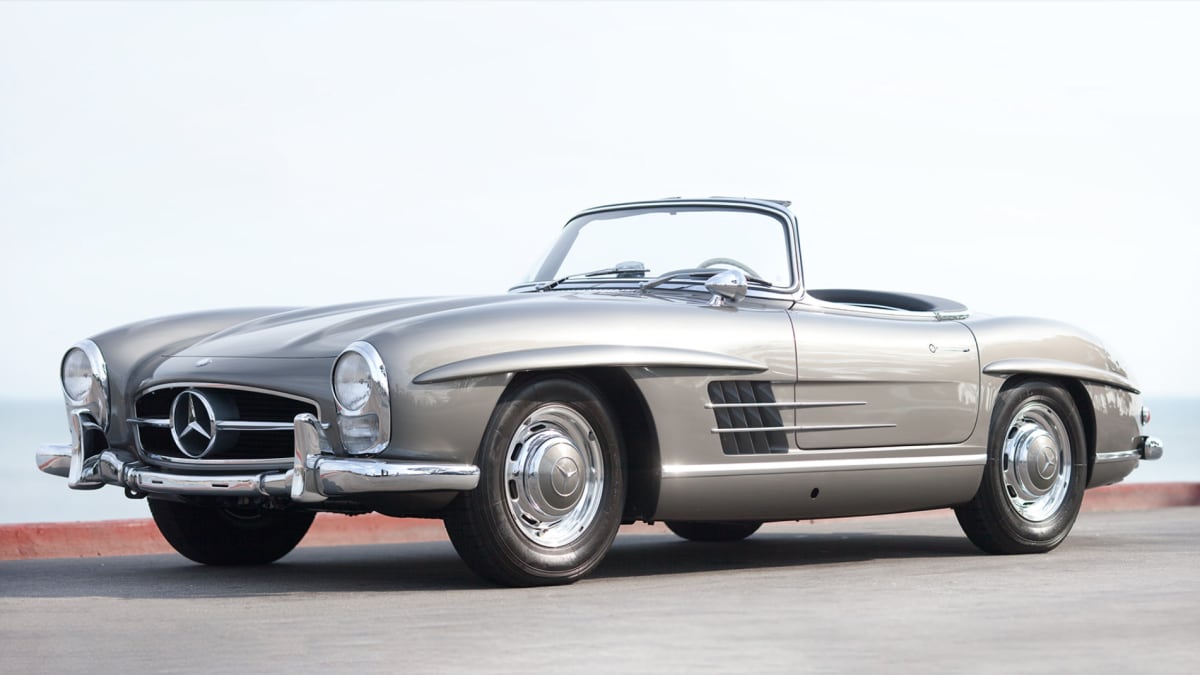
RM Sotheby’s
1959 Mercedes 300 SL Roadster
1959 was a momentous year in America. The concrete was still drying on early stretches of the interstate highway system, we were locked in Cold War with the Russians, cars were deathtraps with tailfins that got 8 mpg. Buddy Holly died, and far less significantly, I was born. (Yes, you might think I’m old.) The average new car cost $2,200, which made our time-travel trip to spend $10,000 in back-then money a pleasant outing.
First thought: Buy a Corvette. Surprise, you could buy two 1959 C1 Corvettes (they were $3,875 apiece), with enough money left over for a Chevrolet Apache truck ($2,002). There would then be enough money left over after that to buy hundreds of gallons of 30-cent gasoline.
Maybe some exotica then? Nope, overshot the mark a little. A Maserati 3500 GT was in the $12,000 range, and a Ferrari 250 GT was $14,000-plus.
Detroit offered the Cadillac Fleetwood 75 at $9,533, and Lincoln Continental Limousine at $10,230. Now we’re in the zone.
Even better: A Mercedes-Benz 300 SL Roadster by some accounts cost $10,928 (that’s $114,000 in today’s money). That’s a bit over budget, but just look at the thing. Wouldn’t you scrape together every dime you had? The Roadster was the follow-up to the 300 SL Gullwing of 1954-57, entering production in 1957 through 1963, and together they’re considered among history’s most beautiful car designs. Our contributor Basem Wasef was privileged enough to drive a Gullwing in the Mille Miglia a few years back. Steve McQueen owned a 300 SL Roadster — of course. Clark Gable, too.
There were a mere 1,858 Roadsters built over seven years of production, so it was rare then and rarer today, with prices well over $1 million. If you want to be a stickler about this game’s $10,000 price restriction, a Mercedes 190SL cost well under $5,000, and it’s also quite lovely, so we could go with two of those.
1996 – Road Test Editor Zac Palmer
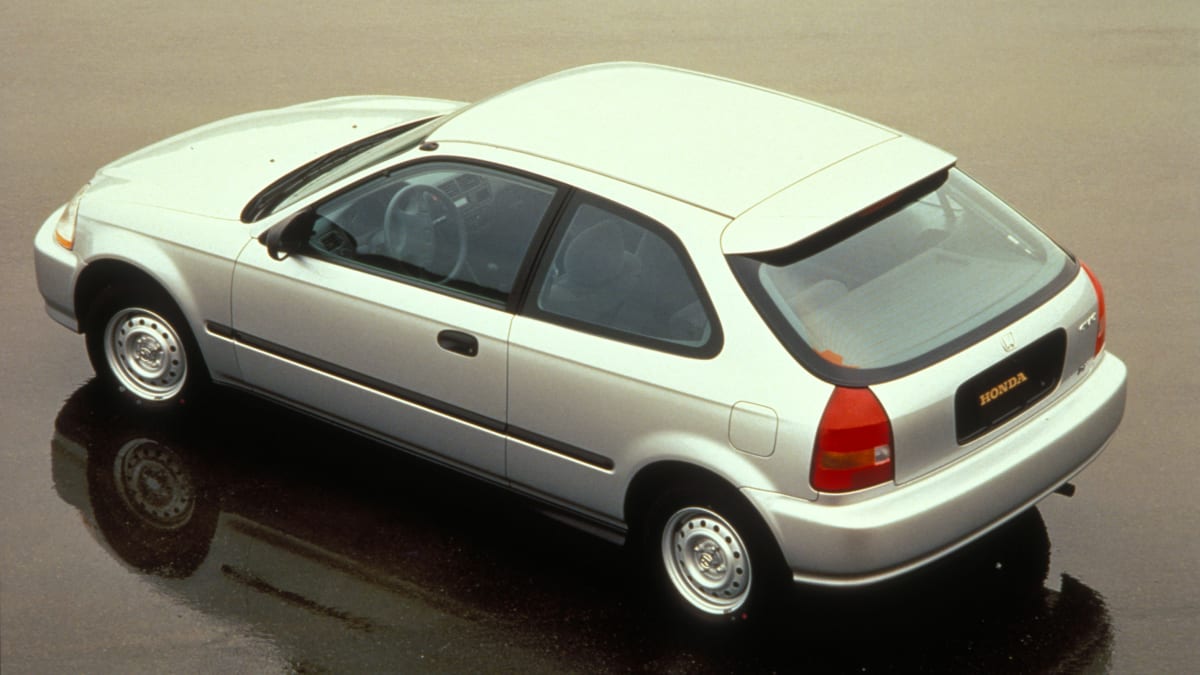
1996 Honda Civic Hatchback
Yeah, I got hosed on this one. Or at least I thought I did. Being the youngest editor on staff apparently has its downsides, but I’m not even mad about my ride! Initially, I suspected that I’d be relegated to something like a Ford Aspire or Hyundai Accent, but turns out the Civic Hatchback CX with a five-speed manual was a screaming deal back in the day. For just $10,350, I’m rolling in a car that countless Honda freaks would be drooling over today. Mostly because they want to strip it and put a K20 in it, but still! The 1996 Civic Hatchback looks like any hatchback aficionado’s dream, and I somehow ended up with a Honda that makes more power than Riswick’s Prelude — I have a whole 106 ponies from my 1.6-liter versus his even 100 from a 1.8-liter.
This pick isn’t exactly out of the realm of what I would buy without being heavily restricted by our cap, and while I’d much rather have an Si, even the regular Civic Hatchback in 2023 is a shockingly good vehicle. Thanks to Honda in the ’90s for making this exercise much less painful than it could’ve been.
1992 – News Editor Joel Stocksdale
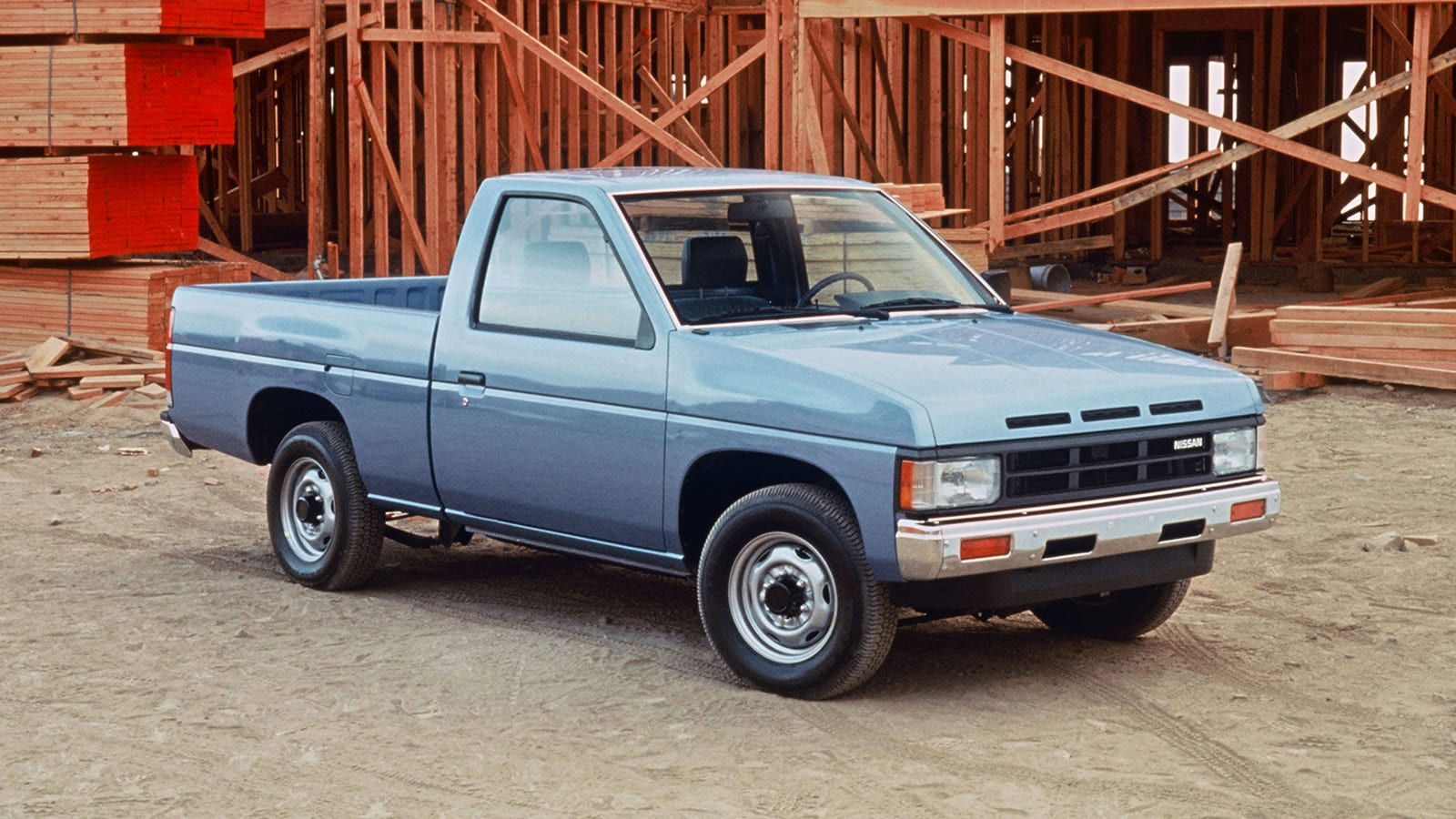
1992 Nissan Truck (Hardbody)
Yeah I’m not doing much better than Zac. I figured, surely I could afford one of those nifty little mini sports coupes that were so popular in the 1990s. I could totally rock a Mazda MX-3, Nissan NX or Geo Storm. Silly me. All of those broke the $10,000 bank. Nicer versions of small sedans and hatchbacks were out, too. Only the least powerful versions of all of them were cheap enough.
But, a bit surprisingly considering modern prices, small pickups were a pretty viable option. I landed on the 1992 Nissan Truck (1989 version pictured above), more commonly known as the Hardbody. Right off the bat, it sports the chunky, modern lines penned by Nissan’s California design studio that have made it surprisingly timeless.
Under the hood, it has a single-overhead cam version of the KA24 2.4-liter four-cylinder. Almost the same engine was also used in the early 240SX, later replaced by a double-overhead cam version. In the Hardbody, it made a respectable 134 horsepower and 154 pound-feet of torque. It also had a five-speed manual and, of course, rear-wheel drive. The 3,085-pound curb weight wasn’t too bad, either. It’s basically a crude, cheap version of a 240SX. If you’re desperate. Which I would’ve been.
That being said, the Hardbody had motorsport heritage. Certainly there were off-road 4×4 racers, but my base, four-cylinder truck could look up to the SCCA road course racing trucks of the day, too.
Features were borderline nonexistent. You got cloth seats, a speedometer, odometer, coolant temperature gauge, roll-down windows and mirrors on either side. I think you at least got an AM/FM radio, though the brochure wasn’t especially clear, only showing options for cassette and CD decks. With a base price of $9,165, I might have had budget for one option. And my first choice would probably be air conditioning. And if that was too pricey, I’d probably go with the cassette player.



